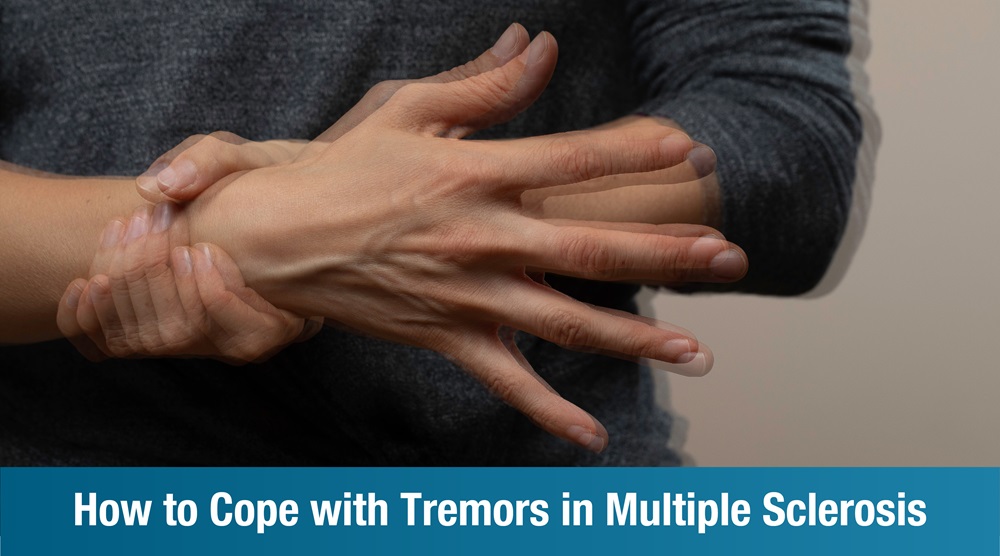
Tremors, an involuntary rhythmic muscle contraction leading to shaking movements in one or more parts of the body, are a common symptom in individuals with multiple sclerosis (MS). These tremors can significantly affect daily life, making it important to understand their causes, symptoms, and treatment options.
MS tremors occur due to demyelination in the nervous system. Myelin is the protective sheath around nerves, and its damage disrupts nerve signals. This disruption can cause various types of tremors in people with MS, including intention tremors, which occur during purposeful movement, such as reaching for an object.
Types of MS Tremors
MS tremors can manifest in several ways:
- Intentional Tremor: Occurs during deliberate movement, such as touching your nose with your finger. It’s the most common type associated with MS
- Postural Tremor: Occurs when maintaining a position against gravity, such as holding your arm outstretched
- Resting Tremor: Occurs when muscles are at rest; less common in MS
- Action Tremor: Occurs during voluntary muscle contractions; can include postural and intentional tremors
Symptoms of MS Tremors
Symptoms of MS tremors can vary widely among individuals. Common symptoms include:
- Hand tremors: Makes it challenging to hold objects or write
- Head tremors: Less common; can be particularly distressing
- Leg tremors: Affects mobility and balance; can make walking difficult
- Voice tremors: Alters speech patterns; can impact communication
Diagnosis of Multiple Sclerosis Tremor
Diagnosing MS tremors involves:
- Imaging tests such as MRI to detect lesions in the brain and spinal cord
- A thorough neurological examination
- Patient history
A neurologist typically assesses the type and severity of tremor and its impact on daily life.
Other tests might include electromyography (EMG) to measure muscle activity and nerve conduction studies.
Treatment for MS Tremors
At Plexus, our customizable rehabilitation program for MS includes a combination of stem cell therapy, physical therapy, speech therapy, and occupational therapy to slow disease progression and control the symptoms. Let’s take a closer look:
Physical Therapy
Our physiotherapists design exercises to improve coordination, strengthen muscles, and help manage tremors in the hands and other body parts. Techniques like weight-bearing exercises and resistance training can be particularly effective.
Occupational Therapy
We provide strategies and tools to adapt daily activities, making tasks easier and less affected by tremors. This might include the use of adaptive devices like weighted utensils, button hooks, or specialized writing tools to improve function.
Lifestyle Modifications
In order to manage daily tasks with much more ease, we recommend the following:
- Braces to hold the joint still and to make it easier to walk and move around (when placed on the ankle, foot, or arm)
- Wearing clothes with velcro fastenings rather than hooks or buttons
- Stretches and exercises to improve mobility and control in the limbs
- Using a drinking straw to avoid spillage
- Using a speech-to-text converter to type
Regular exercise, stress management techniques, and a healthy diet can also contribute to overall well-being and potentially reduce the severity of tremors.
Stem Cell Therapy
In addition to traditional rehabilitation approaches, Plexus offers advanced treatments like stem cell therapy for multiple sclerosis. Stem cell therapy is an emerging treatment that aims to repair the damaged myelin sheath and modulate the immune response in MS patients. Here’s how it works and its potential benefits:
Stem cell therapy involves harvesting stem cells from the patient’s own bone marrow or blood, processing them, and then reintroducing them into the body. These stem cells have the potential to:
- Regenerate myelin by developing into myelin-producing cells and helping to repair the damaged myelin sheath around nerves
- Modulate the immune system reduce autoimmune response that attacks the myelin, potentially slow disease progression
- Promote neuroprotection by releasing growth factors that protect nerve cells from further damage
Benefits of Stem Cell Therapy
- Goes beyond symptom management: Stem cell therapy aims to alter the course of the disease by repairing and protecting nerve cells.
- Reduces life-disrupting symptoms and tremors: By repairing the damaged myelin and modulating the immune response, stem cell therapy can help reduce the frequency and severity of tremors. It also reduces symptoms such as fatigue, mobility issues, and tremors.
- Improves quality of life: By potentially slowing disease progression and reducing symptoms, stem cell therapy enhances overall quality of life.
To know more about our award-winning rehabilitation program for Multiple Sclerosis, reach out to our team in Bangalore or Hyderabad today.
WhatsApp +91 89048 42087
Call +91 78159 64668 (Hyderabad) | +91 82299 99888 (Bangalore)
FAQs
How to control tremors with MS?
Controlling tremors with MS involves a combination of medication, physical therapy, and lifestyle adjustments. Traditional treatments include medications like beta-blockers and anticonvulsants. On the other hand, physical and occupational therapy can improve muscle control. Stress management and adaptive devices also play crucial roles in managing tremors effectively.
Which treatment can provide relief from tremors in a patient with multiple sclerosis?
Traditional treatments that can provide relief from MS tremors include medications such as beta-blockers, and anticonvulsants. Deep Brain Stimulation (DBS) is another option for advanced cases. Physical and occupational therapy play crucial roles in managing and reducing tremor symptoms.
What is the new treatment for tremors?
One of the newer treatments for tremors, including those associated with MS, is focused ultrasound therapy. This non-invasive procedure uses ultrasound waves to target and disrupt the brain areas causing tremors. It offers an alternative for patients who do not respond well to medication or other treatments.
What foods reduce tremors?
Foods rich in magnesium, omega-3 fatty acids, and antioxidants have been known to help manage tremors. Leafy greens, nuts, seeds, fish, and berries are beneficial. Staying hydrated and maintaining a balanced diet that avoids caffeine and alcohol can also contribute to minimizing tremor severity.










